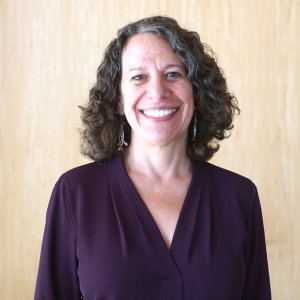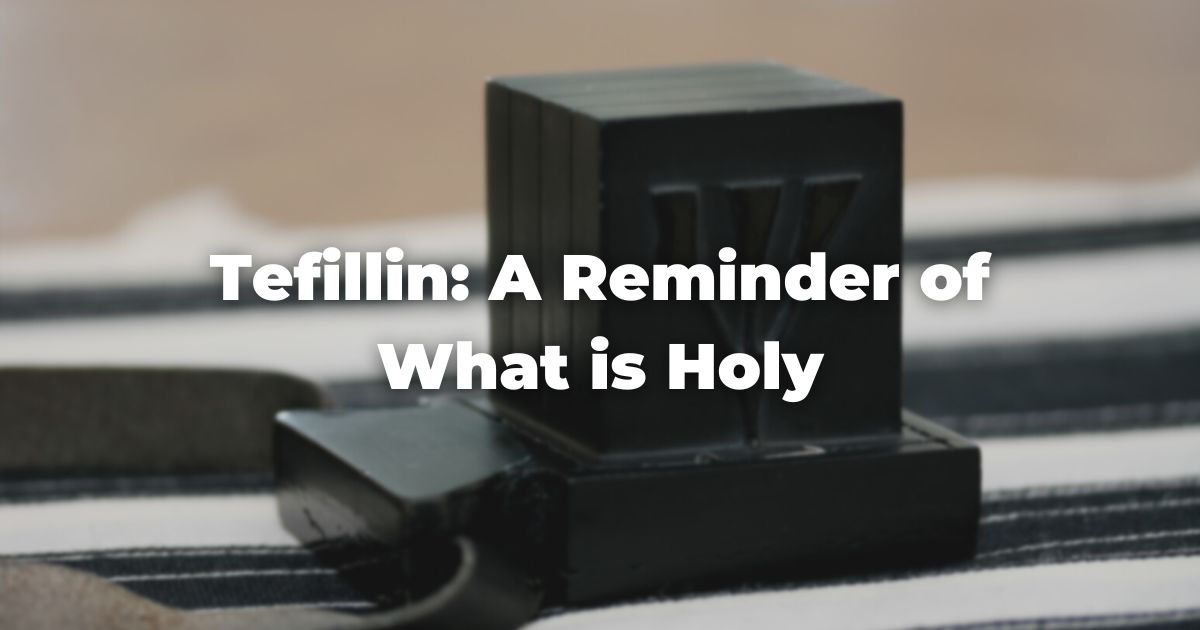Bind them as a sign on your hand and let them serve as a symbol on your forehead.
—Deuteronomy 6:8
This verse is part of the V’ahavta, the first paragraph of the Shema that Jews are supposed to recite first thing on waking up in the morning and the last thing before going to sleep at night. It tells us to teach our children to recite the Shema when at home and away, and to place these words on the doorposts of our homes – the reason we have mezuzot.
But what is this “sign upon your hand” and “symbol on your forehead”?
These are tefillin, phylacteries, black boxes that contain the words of the Shema and other verses from TorahRefers to the first five books of the Hebrew Bible, the Tanakh, also called the Five Books of Moses, Pentateuch or the Hebrew equivalent, Humash. This is also called the Written Torah. The term may also refer to teachings that expound on Jewish tradition. Read more, worn during morning services. They are connected to leather straps that are specially sized to stay in place on your forehead at your hairline and separately to wrap around your arm and hand, holding the other box on your bicep.
Tefillin are strange.
The leather straps and the wrapping sound like bondage – and require a detailed ritual of blessings and wrapping in a specific way. Since they are not worn on Shabbat or holidays, if you have not attended a regular weekday morning minyan, you may have never seen them.
And they have traditionally been the practice of Jewish men only, persistently more than kippot/head coverings or tallitot.
Tefillin are complicated. They are required to be black only.
They need to be correctly sized, so you need to purchase them from someone who knows how to adjust the head and arm straps, often a Judaica store run by traditional Jews. It takes practice to wrap correctly so they stay on during services.
Yet the Conservative movement has determined that those identifying as female are equally obligated in the mitzvah of tefillin, the same as wearing a tallit (Barmash, 2014 Women and Mitzvot).
But tallitot are now widely available in any style and color you can imagine. Head coverings run the gamut from traditional kippot to scarves to headbands, all being acceptable. Tefillin? Still plain black boxes with leather straps. And with relatively few role models, it can be intimidating to find someone to support efforts to learn and embrace this mitzvah.
And yet, there is a history of women wearing tefillin.
Rashi, one of our most famous commentators, had daughters who are said to have worn tefillin. The TalmudReferring to one of two collections, the Jerusalem and Babylonian Talmuds, edited in the 6th century, that contains hundreds of years of commentary, discussion, and exploration of the ideas in the Mishnah. One could describe it as Mishnah + Gemara = Talmud Read more discusses that King Saul’s daughter Michal, a wife of King David, wore tefillin. Hannah Rachel Verbermacher, known as the Maiden of Ludmir, the only female rebbe in the Hasidic movement, wore tefillin in the late 1800’s.
So how did I get there?
I began wearing a kippah when I started teaching in Day School, first put on a tallit when I chanted my first Torah reading at age 36, and did not start wrapping tefillin until I developed a regular practice of morning prayer at age 50.
I discovered that my morning davening felt incomplete with just kippah and tallit, and began to explore wearing tefillin.
After watching a number of YouTube videos created by Orthodox men, I took my son’s tefillin and began practicing. I was fortunate to have a female Cantor at my davening shul who had been wrapping for years to serve as mentor and support.
And now, it is second nature and something I miss when I skip it.
I notice the difference in how I feel and in how I approach my day. On the mornings when I make time to slow down, breathe, and thank God for the gifts I have been given, I am in a much more positive frame of mind – no matter what is on my schedule.
When I take off my tefillin each day, the marks remain on my arms for several hours. As I go about my work and my mundane routine, I am regularly reminded of what is holy.
The physical wrapping of myself in my Judaism enables a deeper spiritual connection than I could possibly have imagined.
(If you would like to explore more about tefillin, this set of videos shows all genders wrapping with very clear instructions: All Genders Wrap – YouTube)
Author
-

Rabbi Julie Schwarzwald (she/hers) is dedicated to the idea that Jewish education should be fully accessible to all, since we are each created B’tzelem Elohim, in the image of God. Schwarzwald is currently the B' Mitzvah Program and Ritual Director at Beth El Synagogue in St. Louis Park, Minnesota, after 10 years or working as Director of Congregational Learning at various synagogues in New Jersey. With a first career teaching in public and private schools, Schwarzwald taught at Golda Och Academy for 12 years. She received Rabbinic Ordination in 2019. Rabbi Schwarzwald is honored to serve on the board of the Jewish Educators Assembly.
View all posts




